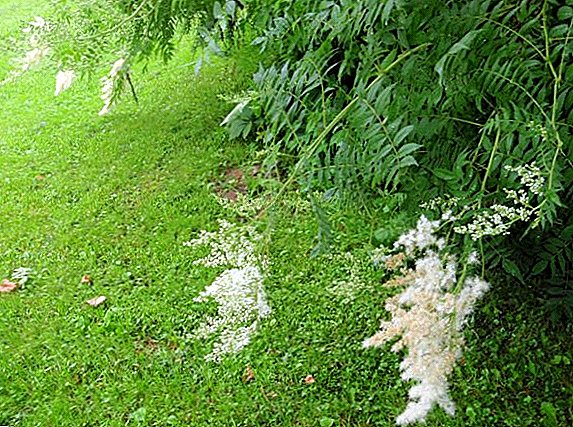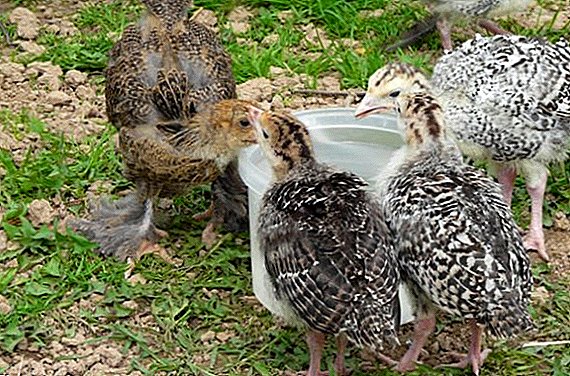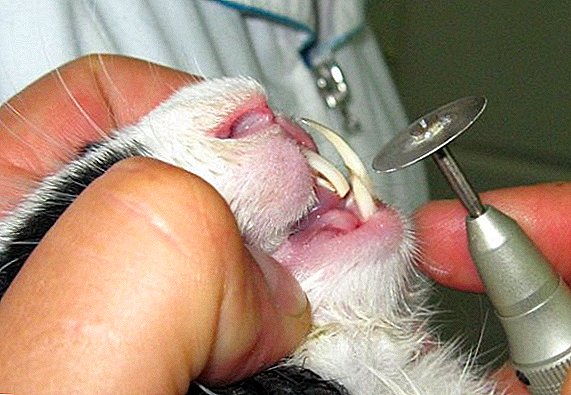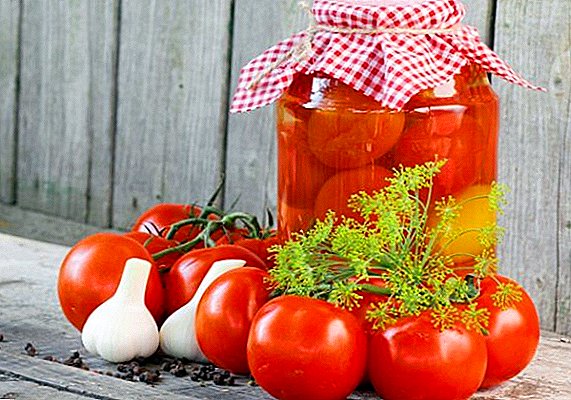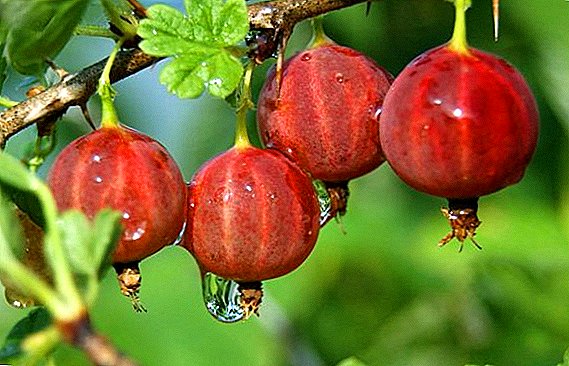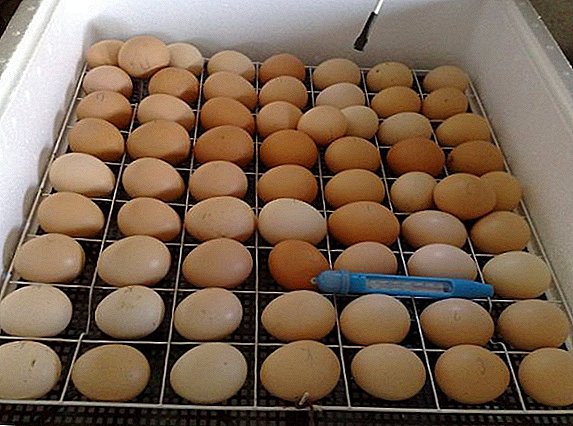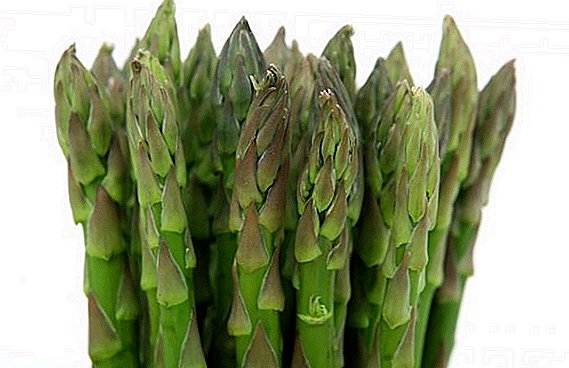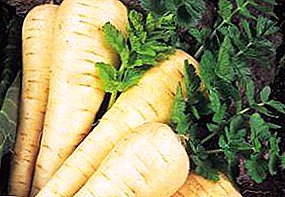
Pasternak belongs to the umbrella family and is a crop related to parsley, dill and other plants with umbrella inflorescences.
The height that the plant will eventually reach depends on the quality of care, the planting process and the type of soil.
Eat root vegetables, which take either a round shape or a cone shape.
Pasternak is a plant with a straight stem, on which are elongated large leaves. It blooms with umbellate buds of a yellowish hue.
Culture value
 In cooking, parsnips are used as seasoning. He has a delicate flavor and a terrific aroma, thanks to which has won many fans among the chefs and housewives.
In cooking, parsnips are used as seasoning. He has a delicate flavor and a terrific aroma, thanks to which has won many fans among the chefs and housewives.
Root vegetables are added to soups and side dishes, as well as seasoned main dishes. Especially good vegetable with meat blanks. Pasternak is used for the preservation of vegetables.
In addition to the valuable taste, parsnip is characterized by the presence of healing properties. Pleasant smell provokes appetite.
Root crop relieves pain as a result of renal or stomach cramps. It helps to cope with cough and dropsy, soothes, treats vascular spasms. The benefits of the plant are obvious to the male population: parsnips increase potency.
Healing qualities have seeds that make medicine that helps in the field of dermatology. For example, a preparation with the content of parsnip treats vitiligo and psoriasis.
Popular varieties
There are a large number of varieties of parsnip, which differ from each other in shape and time of aging.
Variety Delicacy. Refers to medium wounded. The name clearly characterizes the taste and aroma of the variety. Root vegetables are very tasty and have a pleasant smell. Vegetable takes a rounded shape and by weight reaches three hundred grams.
White Stork. They relate to mid-ripening species, but the fruits are harvested almost simultaneously with medium-early. Vegetable, shaped like a carrot, painted white. By weight reaches one hundred grams. The variety is used in food due to its pleasant taste. All fruits ripen at the same time and are perfectly stored.
Sort Gavrish. It is considered mid-early. It tolerates cold, can endure even frosty weather. Gavrish develops normally at a temperature of plus five. Emerging shoots will endure such a temperature, and the grown-up specimens can tolerate frosts and temperature indicators at minus eight.
Growing parsnips
 Many gardeners are aware of the existence of parsnip, some have eaten root vegetables, but few summer residents are aware of the nuances of cultivation.
Many gardeners are aware of the existence of parsnip, some have eaten root vegetables, but few summer residents are aware of the nuances of cultivation.
Pasternak or immediately sown in open ground, or first prepared seedlings. However, not all seedlings emerge. Usually the reason lies in the seed material of parsnip. The seeds contain essential oil, so they have a small shelf life.
The optimal time for sowing is the next season after harvesting. If you keep the seeds longer, they will start losing their germination and may become completely useless. For this reason, seeds are bought only in proven places or grow themselves.
Before sowing, seeds are soaked for 24 hours. Then they are placed in a damp cloth. When the first sprouts appear, the seed is placed close to the freezer chamber. In the prepared soil planted seeds with an interval of twelve centimeters.
Care for parsnips
Root is unpretentious. The soil should always be hydrated. It is necessary to remove weeds in time so that they do not interfere with shoots. Row spacing need loosening.
It is much easier to care for grown plants. The overgrown vegetable itself crushes the weeds, and the leaves cover the soil, keeping the humidity. If the parsnip grows in poor soil, it can be fertilized with mullein or diluted bird droppings a couple of times.
Pests and diseases
Pasternak refers to strong vegetables, which are not terrible diseases and pests. However, he has enemies:
 Carrot fly. A small front sight of red color causes great harm to the plant. She lays her eggs in the root neck of parsnip. Born larvae feed on the plant for a month and seriously harm it.
Carrot fly. A small front sight of red color causes great harm to the plant. She lays her eggs in the root neck of parsnip. Born larvae feed on the plant for a month and seriously harm it.
So that the fly does not attack the parsnip, several rules are observed: the vegetable is planted next to the onion, choosing less humid places and lowlands. They struggle with a fly, sprinkling the plant with diluted ammonia or infusions of wormwood, garlic.
Striped shield. Insect colored in rich red with black stripes. It smells unpleasant. Shchitnik sucks juice from the plant. The method of struggle: manual collection.
Root aphid. Aphid is colored yellowish or greenish. It sucks the juice from the root system of parsnip, which provokes the development of fungal and viral diseases.
To avoid this pest, follow the rules of crop rotation, do not leave crop residues on the plot. Biopreparations help in the fight, and in extreme cases use insecticides.
Field bug - a small bug of a gray color with a green shade. Harmful plant parts, sucking juices. The beetle's saliva is poisonous due to toxic substances. From the pest get rid of with insecticides.
Mealy dew. Signs: appearance on the leaves of white bloom. The fungal disease actively and rapidly progresses, as a result of which the leaves die, the crop does not appear. Fungus kill means copper.
Cleaning and storage
Low temperatures do not harm the parsnip, so you can harvest at the end of the summer season, just before the onset of freezing weather. Vegetable will be able to move even short-term lowering the temperature.
Digging up a root vegetable is advised with a fork, and not with a shovel, to avoid serious damage. When early gathering, when the leaves just started to dry, be sure to put on gloves, so as not to burn the burning parsnip tops.
There are problems with vegetable storage. He feels comfortable in a humid room, but the same environment is favorable for the development of pathogenic flora, which provokes the occurrence of diseases.
A room with dry air is not suitable for storage: a dry atmosphere provokes a loss of juiciness and taste, and also causes wilting of the vegetable.
There are no problems with the storage of residents of the southern regions. In this region, parsnip can not dig at all, and leave to spend the winter right in the ground. As soon as the root vegetable is needed to the table, it should be dug.
We present to your attention a video on the topic: how to grow parsnip from seed


